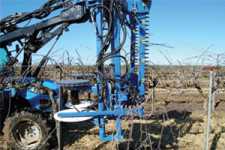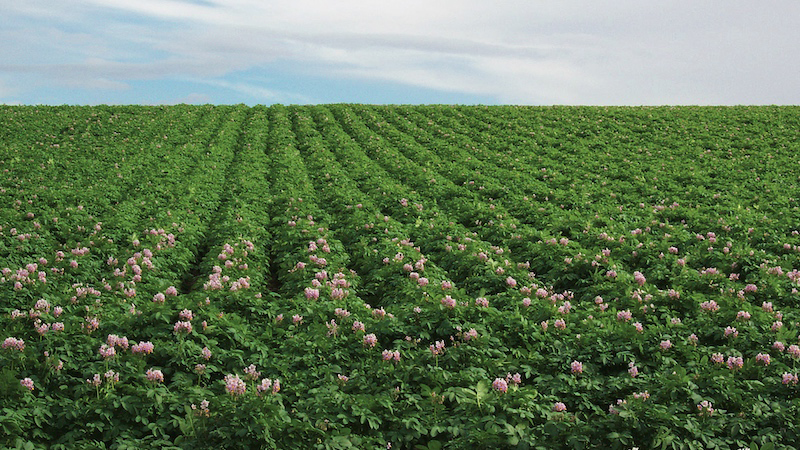Mechanized Winegrape Pruning Pays

Rising costs of hand labor for vineyard canopy management in California have prompted many winegrape growers — especially those with larger operations — to turn to mechanized pruning, shoot thinning, and fruit thinning. Not only is mechanized management fast, research studies in recent years have shown that the yield and quality characteristics of machine-farmed grapes are comparable to those of hand-farmed grapes for a number of varieties.
However, the mechanized approach has not proven efficient in all growing areas. While mechanized harvesting has been widely adopted in the industry, mechanized canopy management is an area where more research is needed, report viticulture research specialists Geoffrey Dervishian and Kaan Kurtural in Fresno State’s Viticulture and Enology Research Center.
Growers in the San Joaquin Valley account for about 60% of the winegrape production in California, but only about 25% of the state’s total crop value, Dervishian noted. Given the thin profit margins in the valley, growers rely on high yields and incorporate cost-saving production strategies to buoy margins, often at the expense of canopy management.
“Failure to properly manage vine vigor can lead to excessive canopy size and irrigation inputs while diminishing fruit quality and reducing yields the following season,” he says.
Seeking Vine Balance
To help enhance efficiency for valley growers, Dervishian is exploring the concept of “balanced cropping” as it applies to mechanized canopy management. Balanced cropping in the traditional sense involves dormant hand pruning for an upcoming season based on records of past yields and vine size. In cases where natural events such as spring frost, hail storms, or poor fruit set occurred, additional hand labor would be required to adjust production.
Using mechanical pruning, these adjustments can be made more quickly and at a lower cost. With support from the American Vineyard Foundation and partial funding from the California State University Agricultural Research Institute, Dervishian designed canopy management trials for a California Sprawl trellis system to compare traditional hand pruning with mechanized methods.
In a Cabernet Sauvignon vineyard on Fresno State’s University Farm Laboratory, the research team set up several treatments including: 1) hand-dormant pruned with no further treatments (as a control); 2) machine-dormant pre-pruned to achieve an estimated 200% of the final desired yield level with dormant-hand pruned follow-up; and 3) machine-dormant precision-pruned to achieve an estimated 130% to 140% of the desired final yield, then followed with machine fruit-thinning to the desired fruit level in the spring.
Boosting Bottom Lines
During the 2009-2010 pruning and growing seasons, a research team of staff and students conducted canopy microclimate evaluations, recording shoot density, shoot length, leaves per shoot, and leaf area. Additional calculations were made to determine percent light interception and leafiness index.
Later in the growing season, researchers monitored cluster architecture and fruit composition. Following harvest they collected berry samples in order to measure pigment, phenolics, and tannins. Sample wines also were made and will be analyzed.
Pruning weights were calculated in the following dormant season to determine vine balance. Initial results indicate no broad or consistent differences in canopy architecture, vine balance, and fruit quality, although machine-pruning with machine-thinning increased yields in 2009 compared to the hand-pruned control. There was, however, a striking reduction in production costs in both of the machine-pruned treatments compared to the control. Machine-pruning with hand follow up and machine-pruning with machine-thinning reduced pruning costs by 23% and 53%, respectively.
“These results indicate that mechanization offers comparable fruit production and quality while lowering growers’ bottom lines,” Dervishian says. “Furthermore, mechanization offers a timely execution of pruning and the option to fine-tune crop loads in the spring with the money saved during mechanized dormant pruning.”
Oxbo International Corp. donated equipment and expertise for the mechanized pruning and thinning. For more project information, contact Dervishian at [email protected].










